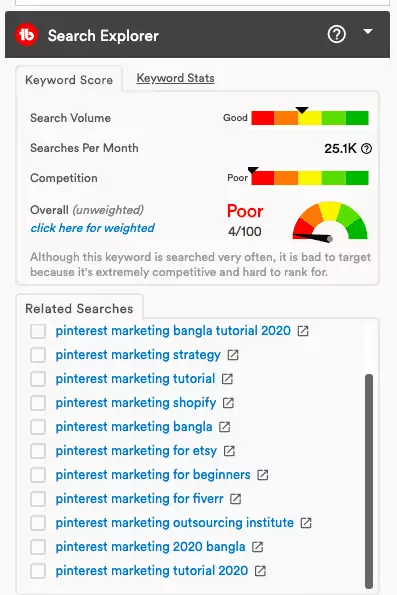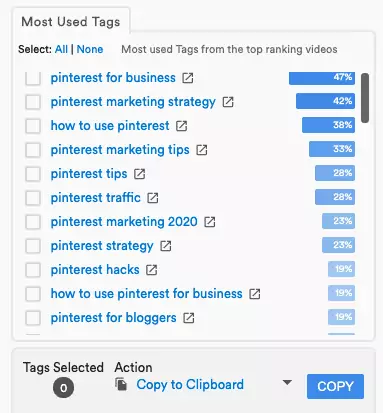One of the most common questions I get as an SEO content writer is, “How do you come up with unique blog post ideas?”
When it seems like every topic under the sun has been covered by one blog or another, this feels like a very valid question. But the reality is that there are plenty of unique ways to come up with engaging blog post ideas.
While using keyword research tools is one of the best ways to generate rankable topics, they don’t do much to help you think outside the box. If your motives are more engagement and clicks over keyword rankings, then you’ll want to deploy these 5 methods for coming up with drool-worthy blog topics.
1. Browse Facebook Groups for Hot Topics

Facebook’s algorithm is great at picking up on posts that have gained momentum in your feed and in Facebook groups. By joining niche Facebook groups, you can easily see what topics your target audience (or competitors) are buzzing about that may inform your content strategy.
Member Comments and Questions
But using Facebook groups to your advantage goes beyond looking at the latest posts. You’ll want to see what questions members are asking about a particular topic. This is where the gold lies. If you see questions that have not been covered on your website, you can easily turn these into blog post ideas.
Create Resources for Members
This method may seem simplistic but it is incredibly underrated. What better way to get engagement on your articles than to cover topics users are already buzzing about? Even better, you can come back to the post later (or future posts) with your new resource in hand, directing more users to your website.
Build Your Own Facebook Community

Don’t want to come across as a troll in other Facebook groups? Start one of your own. That way, you’ll have your own community to source ideas from and can easily share your own resources with members. You can also add Membership Questions asking aspiring members to answer what topics they’re interested in learning about in the group.
2. Ask Your Audience with Google Surveys
I learned this “hack” from expert copywriter, Tori Reid, who uses Google Forms surveys to conduct market research. These surveys are essentially used to gauge interest in new products, uncover audience questions and pain points, and give content creators an idea of what topics to cover in their content marketing.
I’ve adapted this method to help me and my clients come up with rank-worthy topics based on what a particular audience is interested in. These surveys are powerful in that they give you information “straight from the horse’s mouth” in the form of questions, concerns, and fears your audience may have.
To use Google Forms to your advantage, follow these steps:
- Identify your target audience. Who are they? Where do they spend their time? Who do you plan on surveying vs who shouldn’t be included in your survey?
- Create a Google Forms survey. Ask questions like: “What is your biggest struggle when it comes to [ overall topic covered by site ]?”, “What topics do you have more questions about?”, “Where do you go to find answers to your questions regarding [ topic ]?”, and “What is your #1 goal when it comes to learning about [ overall topic ]?”
- Send your survey to your audience. Try to get as many participants as possible so you have enough information to tally the most common responses. 10+ participants should cut it.
- Review the responses. Are you seeing any commonalities? How did participants word their questions/answers? Could any of these be turned into blog topics?
One huge bonus of this approach is that you’ll gain insight into what your audience is actually interested in. In my experience, many content creators haven’t conducted any market research, so these surveys can be incredibly revealing. You might even want to fine-tune your branding once you use this information to adapt your brand’s Unique Selling Proposition (USP).
3. Creep on Your Competitor’s Content Strategy
Many of us are familiar with the concept of competitor analysis when it comes to using SEO and keyword research tools, but how often do we take a manual approach to this process? While data can reveal a lot, sometimes it just takes some good ol’ fashioned creeping to get the wheels turning.
What I mean is going to your competitors’ websites and seeing what topics are being covered – and better yet, what’s not being covered. You may find gaps in your competitors’ content that you can easily fill with your own blog content.
Expand. Elaborate. Fill the Gaps.
For example, there are countless articles covering “how to do keyword research” but how many of them give a step-by-step process on how to do this for content planning? It’s one thing to do keyword research for your website, but the ultimate goal of most website owners is to turn these keywords into actual blog post topics.
In scoping out your competitors, you should look for ways to expand on their existing content, provide more value than they already provide, or otherwise cover the topics they have yet to cover. If you’re able to find a unique angle, your audience will be itching to expand their knowledge with never-before-seen content.
4. Try TubeBuddy for Rank-Worthy Topics
I’m no YouTube master but I love the process of researching click-worthy video ideas. That’s how I came across a YouTube keyword research tool, TubeBuddy, which has since revealed itself to be a helpful tool when it comes to generating blog post ideas as well.
Now, keep in mind that the data you get with TubeBuddy does not necessarily have to do with organic search volume in search engines. You should always turn to standard SEO tools if your main concern is search engine rankings. But TubeTuddy can certainly be used to come up with topics you might not otherwise have found with other SEO tools.
What you do is download the TubeBuddy extension and then take your search to YouTube. You can do a search for an overarching topic you want to cover (I recommend keeping it broad at first) and then watch TubeBuddy work it’s magic.
TubeBuddy’s “Search Explorer” stats will show you related keyword ideas that you can use to 1) come up with awesome YouTube videos or 2) turn into engaging blog posts.
I love this tool because the search terms feel a bit more “organic” and reveal the many creative ways in which users search for content. You’re often unlikely to find these keywords in your standard SEO tools, but that doesn’t mean they can’t be used to create drool-worthy blog posts.
You can also look at the “Tags” section for some additional topic ideas:
You can even go a step beyond this and come up with a complete YouTube keyword strategy and create videos to rank on the platform. You can then embed these videos in your blog posts to get a double-dose of traffic from YouTube and Google.
5. Comb Through Pinterest for Niche Blog Post Ideas
Pinterest is another powerful yet incredibly underrated tool when it comes to generating blog post ideas – and sending traffic to those blog posts. As a search engine itself, Pinterest is a primary driver of traffic for many blogs, particularly in the travel, beauty and wellness, and DIY niches.
But that doesn’t mean Pinterest can’t be used to generate topics for other niches as well. SEO, marketing, web design, and similar topics all have their place on this platform. Don’t knock Pinterest marketing until you’ve tried it!
Get Creative, Get Pinning.
Simply do a search for your preferred topic and see what comes up. You’re likely to find loads of unique article ideas, as well as opportunities to cover topics that aren’t ranking in Pinterest search. You can even click into individual Pins to read comments, visit niche Boards, and discover topics that you might want to cover on your own blog.
Like YouTube, you can go a step beyond topic generation to actually launch a Pinterest marketing strategy. This might open up another traffic source for your website and you could be surprised by the results. If you choose to do this, I recommend utilizing Tailwind, a pin scheduling app, to generate even more traffic for your site.
The Bottom Line
While many guides focus on the often tedious process of SEO content planning, we must remember to use our creative brains to come up with article ideas our audiences really want to see.
While the focus may not be on keyword rankings or organic traffic, these blog posts can do wonders when it comes to driving social traffic, boosting brand authority, and building a community of raving fans.
What methods do you use to come up with creative, out-of-the-box content ideas?





